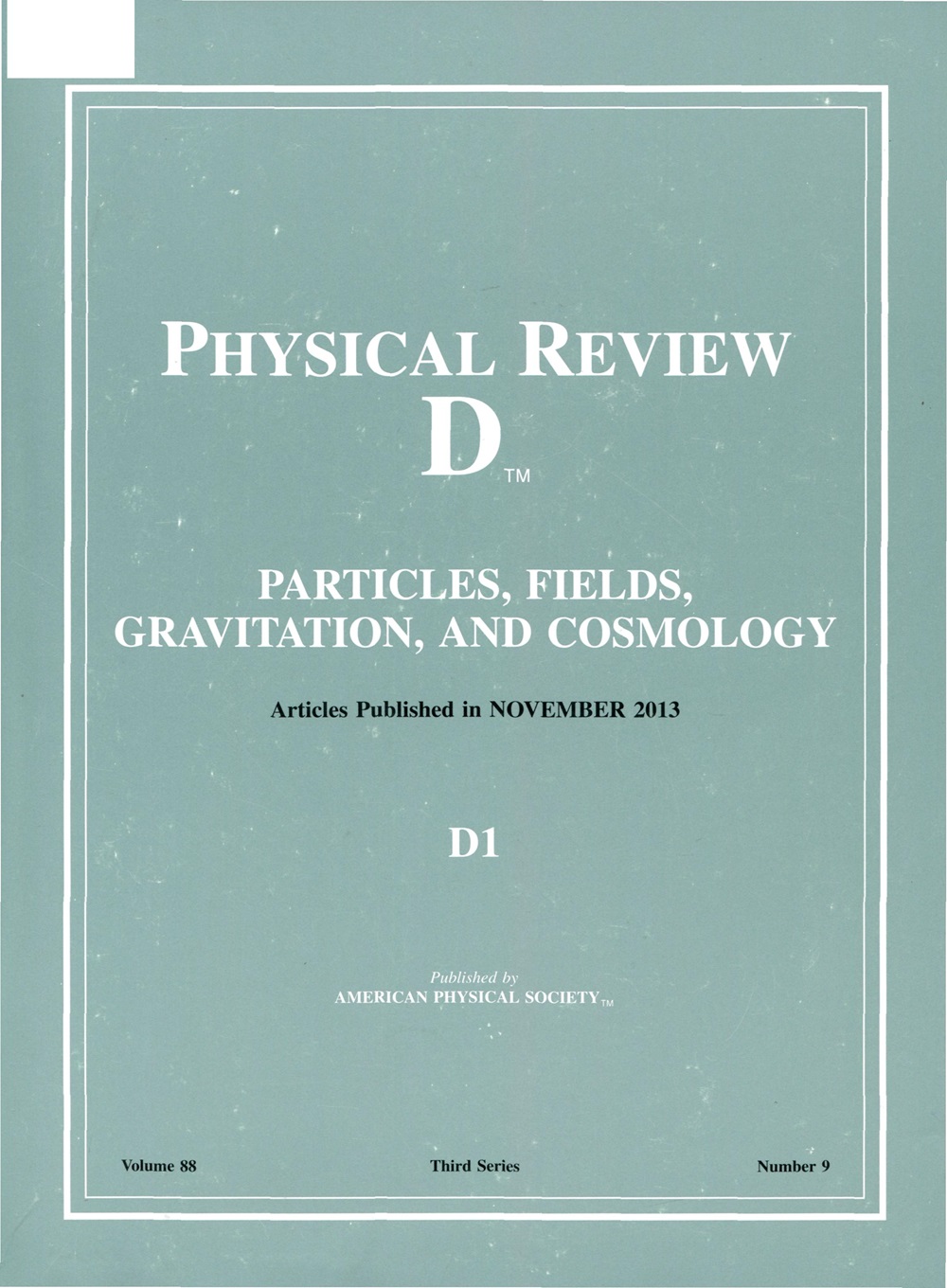Supernova remnants with mirror dark matter and hyperons
IF 5
2区 物理与天体物理
Q1 Physics and Astronomy
引用次数: 0
Abstract
For the first time, we use relativistic mean-field approximation with density-dependent couplings, adjusted by the Density-Dependent Meson-Exchange 2 (DDME2) parameterization, to investigate the effects of dark matter on supernova remnants. We calculate the nuclear equation of state for nuclear and dark matter separately, under the thermodynamic conditions related to the evolution of supernova remnants. A mirrored model is adopted for dark matter, and its effect on remnant matter is studied using a two-fluid scenario. At each stage of the remnant evolution, we assume that dark and ordinary matter have the same entropy and lepton fraction, and a fixed proportion of dark matter mass fraction is added to the stellar matter to observe its effects on some microscopic and macroscopic properties of the star. We observe that dark matter in the remnant core reduces the remnant’s maximum mass, radius, and tidal deformability. Moreover, dark matter heats the remnant matter and alters particle distributions, thereby decreasing its isospin asymmetry and increasing the sound speed through the matter.带有镜像暗物质和超子的超新星残骸
我们首次使用密度相关耦合的相对论平均场近似,通过密度相关介子交换2 (DDME2)参数化进行调整,来研究暗物质对超新星遗迹的影响。在与超新星遗迹演化有关的热力学条件下,我们分别计算了原子核和暗物质的核态方程。对暗物质采用镜像模型,在双流体情况下研究了暗物质对残余物质的影响。在残体演化的每个阶段,我们假设暗物质和普通物质具有相同的熵和轻子分数,并在恒星物质中加入固定比例的暗物质质量分数,观察其对恒星某些微观和宏观性质的影响。我们观察到,残核中的暗物质降低了残核的最大质量、半径和潮汐变形能力。此外,暗物质加热残余物质并改变粒子分布,从而降低其同位旋不对称性并增加声音通过物质的速度。2025年由美国物理学会出版
本文章由计算机程序翻译,如有差异,请以英文原文为准。
求助全文
约1分钟内获得全文
求助全文
来源期刊

Physical Review D
物理-天文与天体物理
CiteScore
9.20
自引率
36.00%
发文量
0
审稿时长
2 months
期刊介绍:
Physical Review D (PRD) is a leading journal in elementary particle physics, field theory, gravitation, and cosmology and is one of the top-cited journals in high-energy physics.
PRD covers experimental and theoretical results in all aspects of particle physics, field theory, gravitation and cosmology, including:
Particle physics experiments,
Electroweak interactions,
Strong interactions,
Lattice field theories, lattice QCD,
Beyond the standard model physics,
Phenomenological aspects of field theory, general methods,
Gravity, cosmology, cosmic rays,
Astrophysics and astroparticle physics,
General relativity,
Formal aspects of field theory, field theory in curved space,
String theory, quantum gravity, gauge/gravity duality.
 求助内容:
求助内容: 应助结果提醒方式:
应助结果提醒方式:


